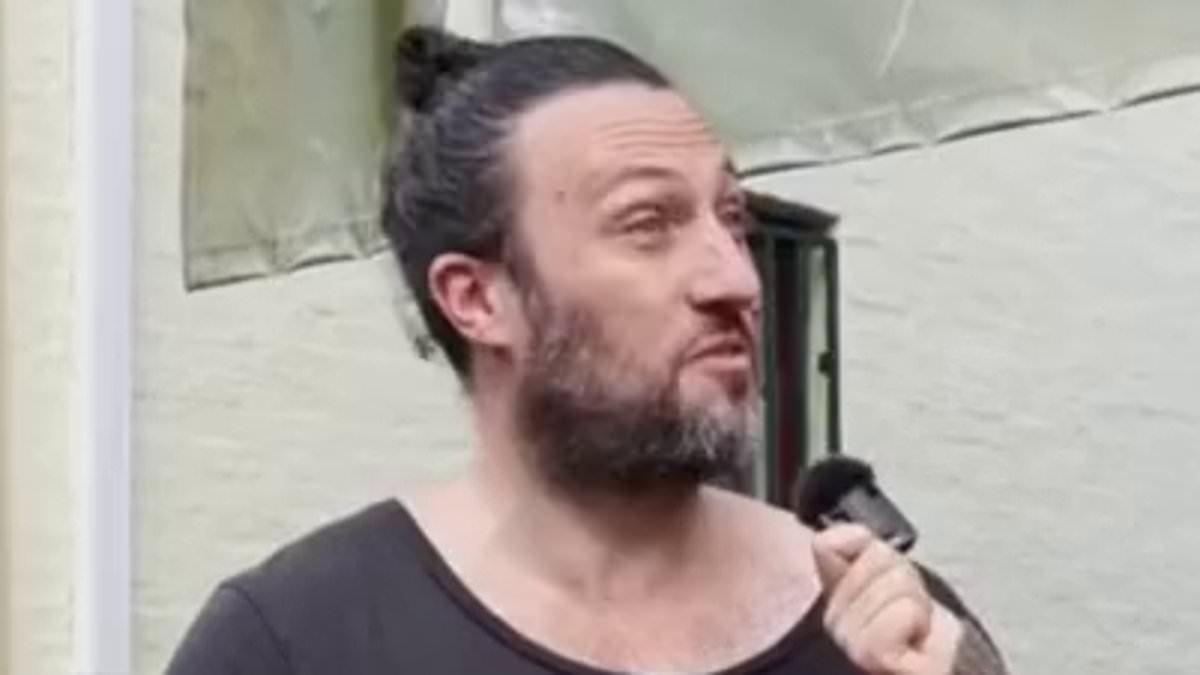By Antoinette Milienos For Daily Mail Australia and William Ton For Australian Associated Press
02:00 23 Jul 2024, updated 02:32 23 Jul 2024
An Australian man’s refusal to commit to a mortgage – believing he would be better off investing in the markets while renting – has been slammed by a finance expert.
‘F**k a mortgage, f**k getting tied to a mortgage,’ a 37-year-old man said during a street interview that was posted to social media this week.
The man explained he had about $60,000 invested and believes he can build that up into enough money to prevent the need to take out a home loan.
‘I’m going to make a lot more in money markets, and then I’m going to buy one outright,’ he said.
Despite not wanting to get a mortgage, the man admitted he was paying out ever-higher rents – money that could have gone to buying home equity.
‘My rent alone has gone up $100 a week in the last year and a half,’ he explained.
‘It’s a problem that is completely avoidable, and frankly, it is a problem that has come directly out of commoditising housing.
‘Turning housing into an asset class is directly causing this problem.’
Finance expert Rob Roper said the man’s thinking was flawed and he risked ending up homeless if his gamble in the markets does not pay off.
‘The alternative (to a home loan) is paying for someone else’s mortgage,’ Mr Roper said, calling out the man.
‘If you’re paying $700 a week rent, that means you’re paying $36,400 per year off your landlord’s mortgage.
‘If you’re paying your own mortgage, eventually you’ll own the home, so you’re not stuck in a situation like so many elderly people at the moment who are forced to pay the rental prices of today without an income.’
Mr Roper explained that Australians can secure a home loan with just a 2 per cent deposit.
First-time buyers in some states also get a stamp duty exemption.
‘So, with around $32,000 in the bank you could buy a $600,000 house, townhouse, unit or apartment for less than you’re probably spending on rent per year.’
Rents continue to climb to record levels across Australian cities, as a relatively static supply is subject to increasing demand by migration-fuelled population growth.
Rents for the June 2024 quarter are 9.1 per cent higher than the same time last year, according to REA Group’s PropTrack Rental Report for June.
The number of properties available for lease on Realestate.com.au were 4.7 per cent lower in June compared to a year earlier, the lowest June level since 2010.
While total listings increased by more than 10 per cent in the June quarter, conditions remained tight with total stocks 4.4 per cent lower year-on-year.
The tough rental conditions appear to be steering more people into buying their own homes, PropTrack economic research director Cameron Kusher said.
First-home buyer loans over the year to May jumped by 6.2 per cent while investor loans grew by 7.9 per cent.
‘Increased lending activity to first-home buyers has seen renters with the means exiting the market to purchase, while increased lending to investors will also likely alleviate some rental pressures,’ Mr Kusher said.
Sydney has the lowest supply of available properties in more than a decade, with new rental listings declining by 2.8 per cent and total rentals down by 4.8 per cent in the June quarter.
Despite recording an increase in vacancy rates to 1.7 per cent, median advertised rents in the Harbour City rose by $60 to top the nation at $740 a week.
It was not much better for NSW’s regional renters with listings contracting by 19 per cent over the year, resulting in tougher competition between prospective renters.
Melbourne’s rental supply remained tight in June as 16.8 per cent fewer new listings hit the market over the year, but total listings remained relatively stagnant.
The rental vacancy rate grew by 0.34 per cent over the quarter to reach a 12-month high of 1.5 per cent but that also signalled a rise in median rents to $575 a week, a $55 increase from a year prior.
While rentals in regional Victoria tightened and new and total listings declined, prices remained unchanged at $450 a week.
Brisbane renters faced a sunnier outlook as market conditions eased over the June quarter, bringing with it a growing rental supply and listings while competition eased.
Vacancy rates rose to 1.2 per cent over the quarter and median rents for both Brisbane and regional Queensland sat at $620 per week.
Adelaide and Perth experienced an increase in rental supplies and also increases to their asking rents as conditions eased across both markets.
The median rent for Adelaide in the June quarter rose to $570 while Perth had an advertised median rent of $650.
Rental asking prices in the nation’s capital remained stagnant at $600 over the year to June despite tighter supply and growing demand.
While rental growth continues to slow, Mr Kusher anticipates it to continue outpacing the inflation rate as prices are unlikely to stabilise in the short and medium term.
‘Weakening rental growth likely reflects the trade-offs that renters are making due to the heightened cost of rent and living,’ he said.
‘Some of these trade-offs may include renting smaller properties, renting in less desirable locations where rental costs are cheaper or sharing rental accommodation with other tenants.’
Click here to resize this module




